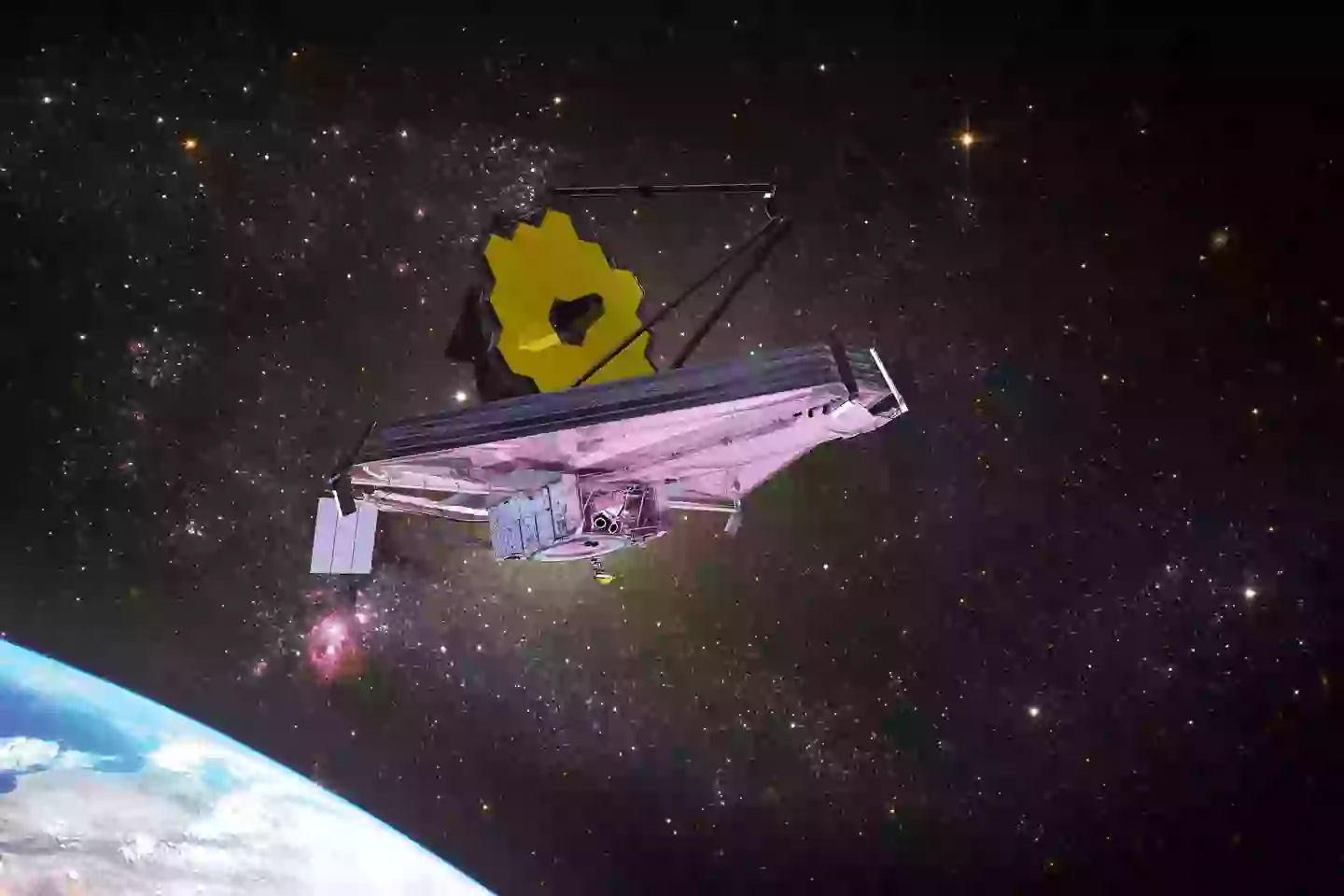
A discovery has been made which has the ability to change everything that we know about the universe.
That's right, and it's all because of The James Webb Space Telescope (JWST).
If you don't know what it is, the JWST is a more advanced version of the legendary 1990 Hubble telescope, which was launched into space in December 2021.
Advert
Living up to its expectations, the JWST has made numerous discovers in space, which could even point to there being life beyond our small planet.
It also went on to find that potential planets could be forming right before our eyes after discs and dust gathered around two stars.

The telescope has captured so many high resolution images of galaxies, as well as stars being formed and even early stage black holes (which is more scary than it is cool).
But it's JWST also made a shocking discovery, which one physicist has called a 'crisis' in the way we understand the universe.
Advert
Astronomers have used the information from both the Hubble and James Webb Space Telescopes to confirm one of the problems in physics that still baffles them.
What is the Hubble Tension?
The issue they need help with is that scientists have arrived at different estimates of the rate of the universe's expansion.
This is called the Hubble Tension, and could potentially upend the world of cosmology for good.

How do we know how fast the universe is expanding?
There are two ways to figure out the Hubble constant - a value that describes the universe's expansion rate.
Advert
The first way is basically through the Big Bang's leftovers, which are tiny fluctuations in the cosmic microwave background.
From 2009 to 2013, astronomers figured out that this figure was roughly 46,200 mph per million light years, or about 67 kilometres per second per megaparsec (km/s/sMpc).
The second way is to use pulsating stars, also known as Cepheid variables.
Astronomers use the outer layers of dying stars, which flicker like broken street lights in the distance.
By measuring its brightness, these Cepheid stars can be chained into a 'cosmic distance ladder', which allows us to look further into the past of the universe.
Advert
Using this, an exact number can be pinpointed that reveals the speed of the universe's expansion.
Estimates of the universe's rate of expansion contradict each other
By using the second method, Adam Riess - professor of physics and astronomy at Johns Hopkins University - and his colleagues estimated that the universe's expansion rate is actually about 74 km/s/Mpc, a value much higher than the previously thought 67 km/s/Mpc.
This could make the universe 10 percent younger than we originally thought.

Advert
The world of cosmology has been catapulted into uncertainty following this discovery.
Nobel Prize winning astronomer David Gross called it a 'crisis' at a 2019 conference.
What did the James Webb Space Telescope find?
Initially, the discovery was thought to be a measurement error by confusing Cepheid stars with regular stars in the Hubble's lens, but the much more accurate JWST disproved these claims, confirming the new discovery.
On 6 February, a study was published in the Astrophysical Journal Letters, highlighting that our understanding of the universe could be very, very wrong.
Lead study author Riess stated: "With measurement errors negated, what remains is the real and exciting possibility we have misunderstood the universe."
Riess observed 1,000 other Cepheid stars in five separate galaxies as far away as 130 million lightyears from Earth, further confirming their findings on the Hubble constant.
He explained: "We've now spanned the whole range of what Hubble observed, and we can rule out a measurement error as the cause of the Hubble Tension with very high confidence.
"Combining Webb and Hubble gives us the best of both worlds. We find that the Hubble measurements remain reliable as we climb farther along the cosmic distance ladder."
Topics: News, Science, Space, James Webb Space Telescope
